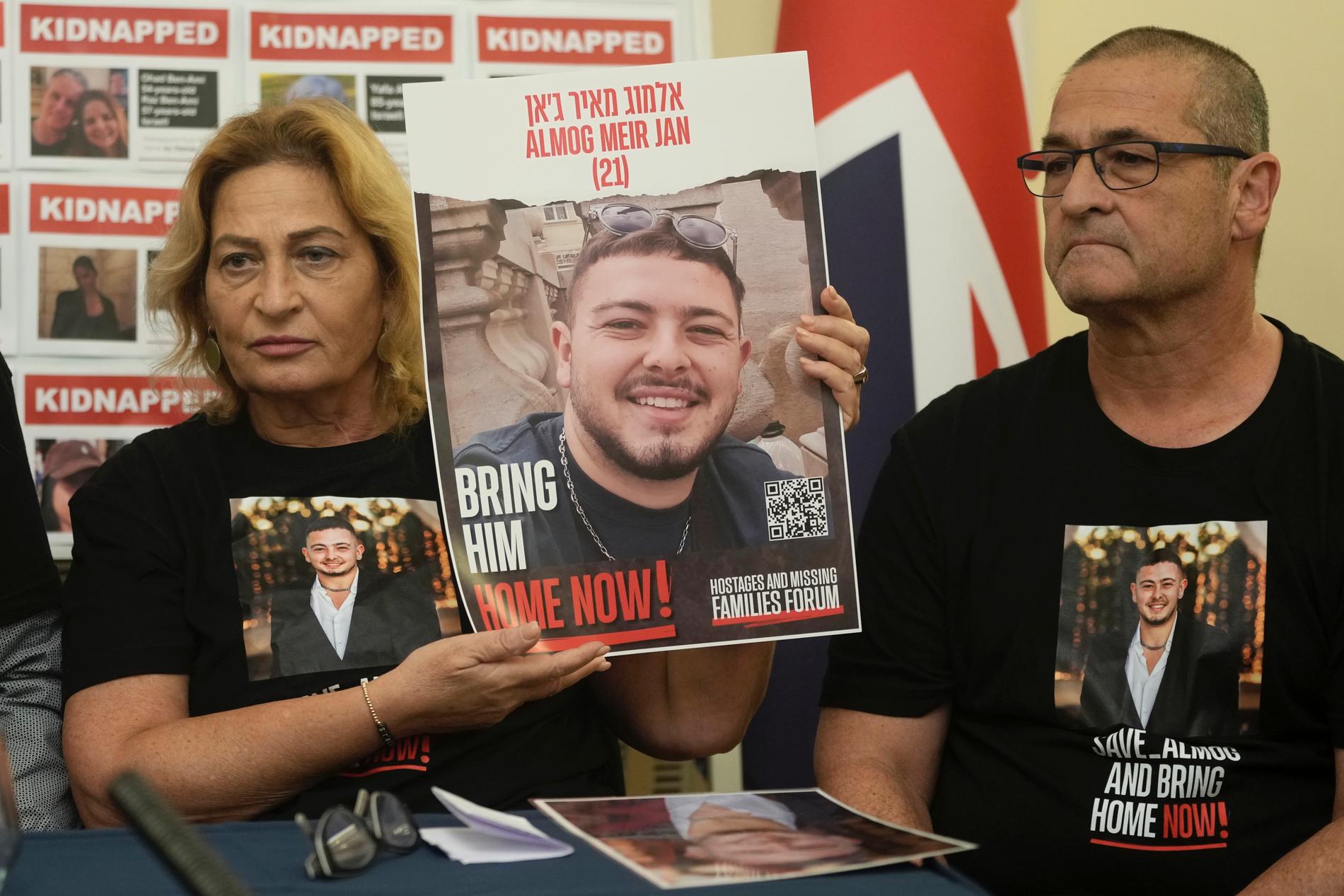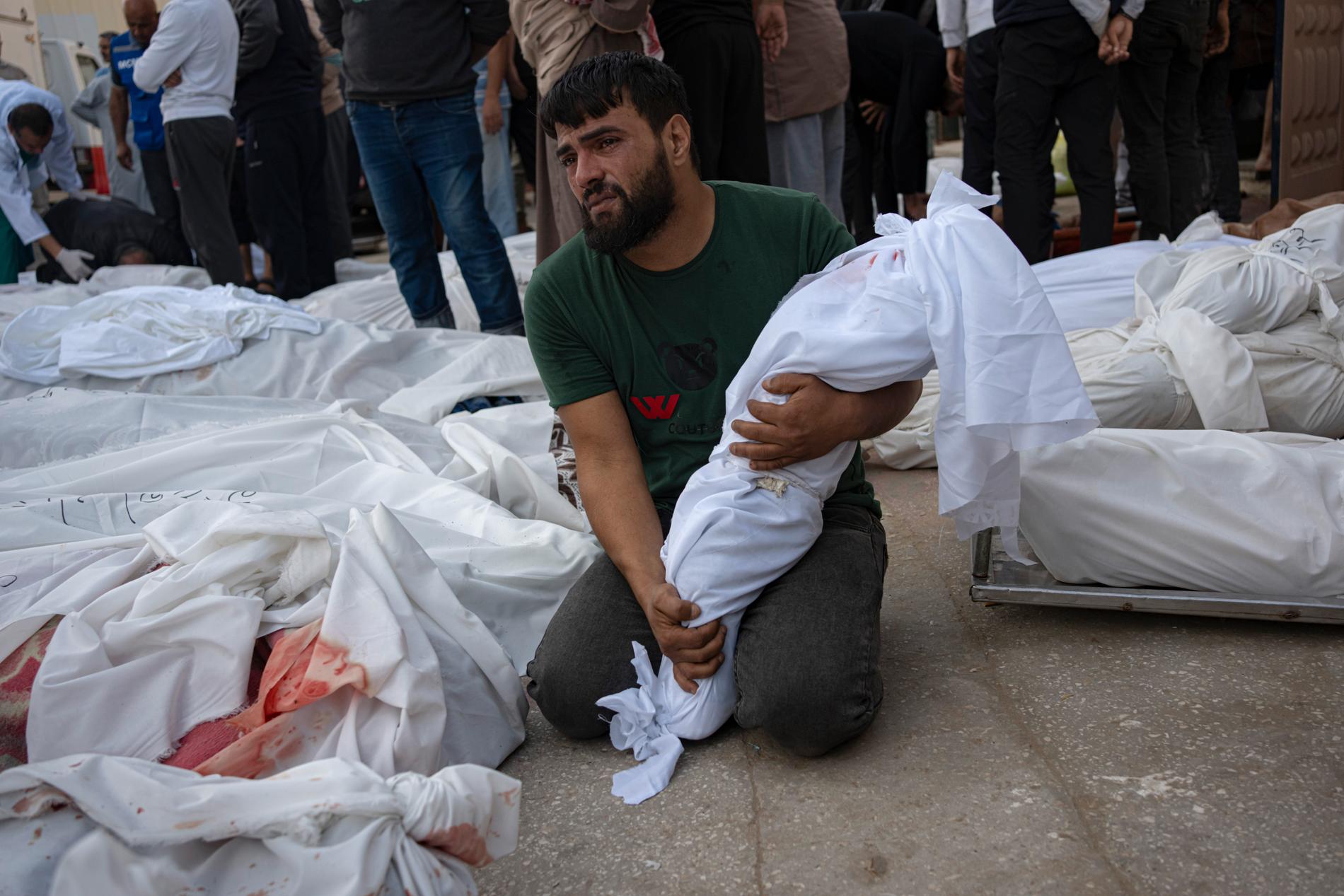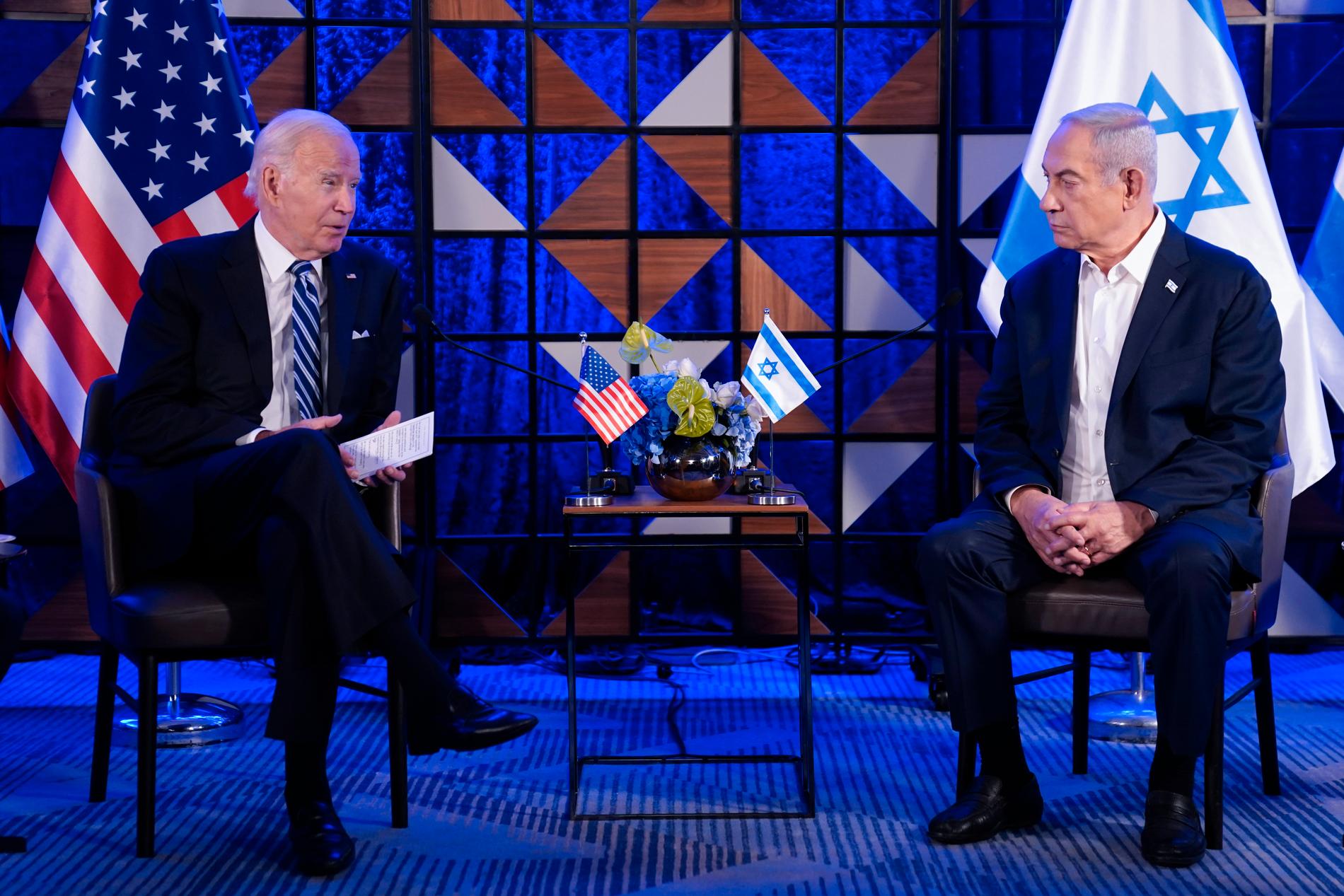
Columnists
The war between Israel and Hamas
Could be the beginning of the end of the war
Wolfgang Hansson
This is a commenting text. Analysis and positions are the writer's.
Published 20.22
The civilian population of Gaza and the hostages are the big winners of the ceasefire.
If it now comes off. From experience, things can still go wrong.
The battles are far from over. But the release of the hostages could be the beginning of the end of the war.
The war has been going on for over six weeks and almost as long negotiations have been held in Doha with Qatar as mediator.
Over time, Prime Minister Benjamin Netanyahu has come under increasing pressure from both the hostages' relatives and the United States to agree to a temporary pause in the war in return for the release of some of the hostages.
Netanyahu has consistently said that the goal of the war, in addition to crushing Hamas, is to bring back all the hostages alive. But so far Israel has only succeeded in freeing one hostage.
Getting 50 hostages out is a success for Netanyahu as well, even though Hamas is holding another 190 people. Getting everyone out at once would have been unrealistic. Hamas wants to ration them out to achieve maximum benefits.
Israel's military would have preferred to continue the war with undiminished strength. They have already captured large parts of northern Gaza and apparently forced the Hamas leaders to flee.
The ceasefire gives Hamas a breather and a chance to regroup its forces. Not least because Israel has agreed not to monitor Gaza with drones for six hours every day. This gives Hamas good opportunities to move its fighters without Israel knowing exactly where they are taking refuge.

The mother of one of Hamas's hostages holds up a picture of her son. Photo: Kin Cheung/AP
Too many hostages
At the same time, Hamas' willingness to release the hostages is a sign that the terror-labeled group that ruled Gaza is under heavy pressure. After weeks of intense Israeli bombing, where many of the combatants had to hide in tunnels underground, one can assume that the terrorist group is both badly wounded and exhausted.
For Hamas, it is also not easy to keep 240 hostages alive. Especially not those who are dependent on medications or care. In normal cases, it only involves a few hostages.
Hamas is said to primarily release children, the elderly and women. The 150 Palestinians released from Israeli prisons are mainly women and minors.
For Hamas, the most valuable of the hostages are the Israeli soldiers.
They will be released last and demand significantly more Palestinian prisoners in exchange for them. Israel has always taken pride in getting its captured soldiers back at all costs.
When the Israeli soldier Gilad Shalit was released five years after the Lebanon war in 2006, Hamas received over a thousand Palestinian prisoners in exchange.
Apart from the relatives of the hostages, there is probably no one who is as happy about a ceasefire as the civilian population of Gaza. The 2.3 million who live there have been forced to endure a furious Israeli bombing campaign for over six weeks. Night as day. 1.7 million live today as refugees. Many of the hospitals have stopped functioning. The UN warns of famine.

A Palestinian man holds the body of his dead child after attacks on Gaza. Photo: Fatima Shbair/AP
5000 dead children
Israel has taken into account the civilian population to a very limited extent. If a Hamas leader was in a residential building, Israel bombed it even though 50 innocent civilians were killed at the same time.
The death tolls speak for themselves even though they come from the Hamas-controlled health authority in Gaza. Over 14,000 Palestinians are said to have been killed, including over 5,000 children. It is a bloodbath the likes of which we have never seen before in a war in Gaza and which is horrific compared to any war.
An important part of the settlement is that much more food, medicine and water will be brought into Gaza via the border with Egypt during the days that the ceasefire lasts.
Next, there is another carrot of extending the truce. Israel promises to extend the ceasefire by one day for every ten additional hostages released by Hamas.
New obstacles can still arise in the form of acts of war or sudden new demands from one of the parties.
However, if the initial exchange works, it will be difficult for Israel to start the war in full again on day five if the alternative is to free ten more hostages each day. Netanyahu will be under intense pressure both from his relatives at home who demonstrate outside government buildings every day and from US President Joe Biden.

Joe Biden meets Benjamin Netanyahu, October 18. Photo: Evan Vucci/AP
Listening to USA
Apart from that, Israel has another problem. It now controls large parts of northern Gaza and has urged the civilian population to flee to the southern parts of the narrow strip of land. Hamas's leadership is also believed to have taken refuge there, as well as some of the combatants.
If Israel bombs and wars on the ground in the same way in southern Gaza as it did in the northern part, the civilian casualties will grow like an avalanche. There is a limit to how much Biden can accept. Israel does not listen to many but the US cannot afford to ignore Netanyahu. They provide Israel with much of the modern weapons the country needs to defend itself.
So even if the war does not end with the temporary truce, we are probably still seeing the beginning of an end to the most intense fighting and the daily bombings.
Inga kommentarer:
Skicka en kommentar